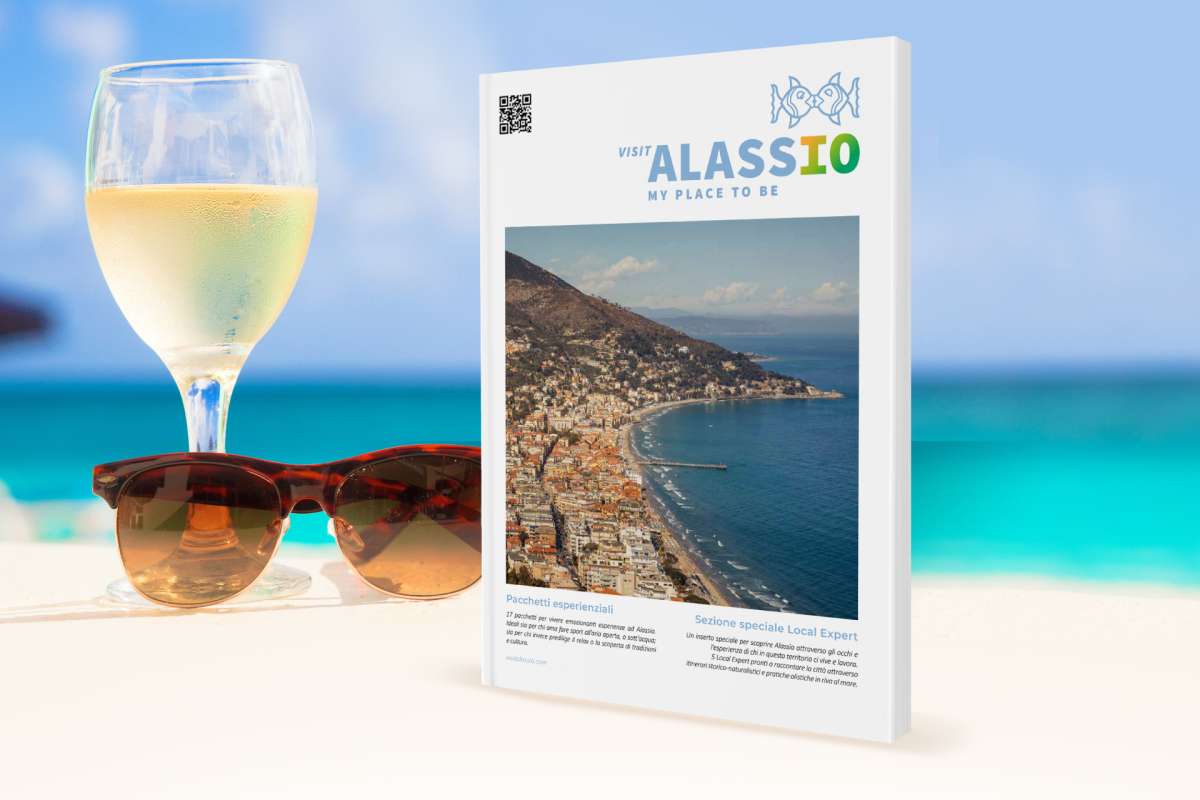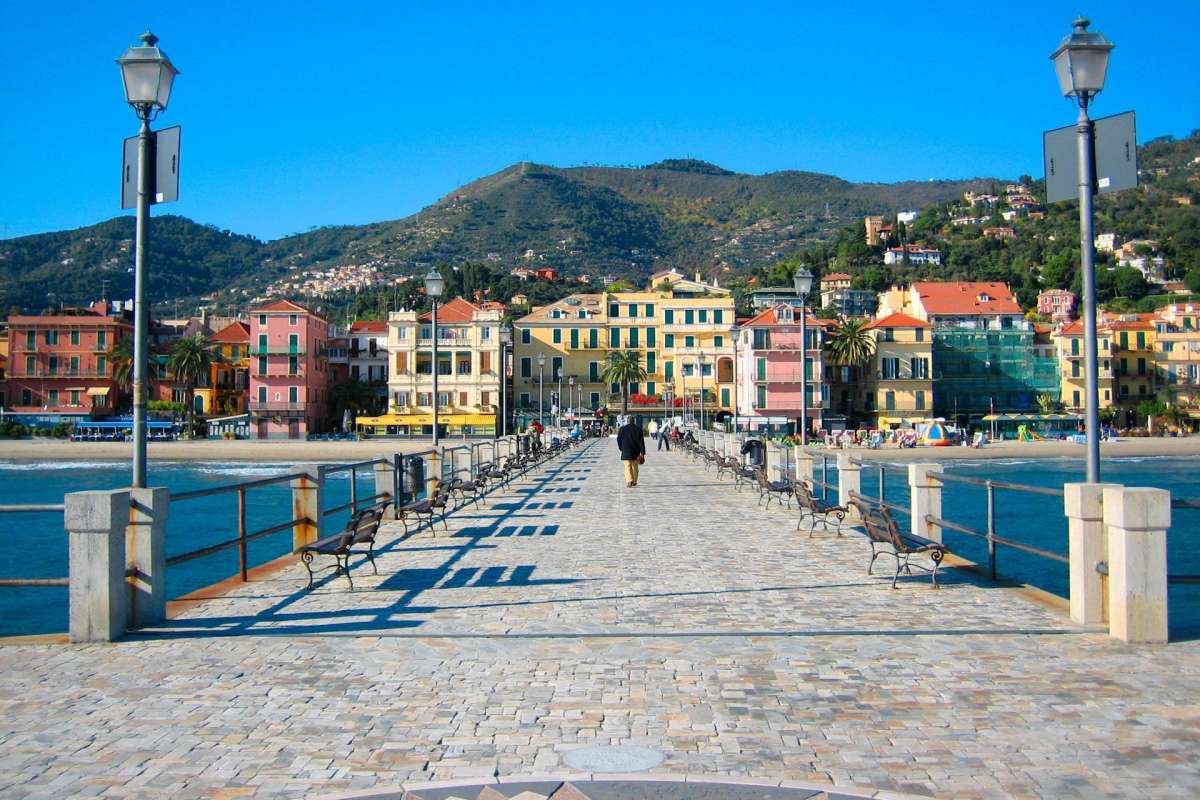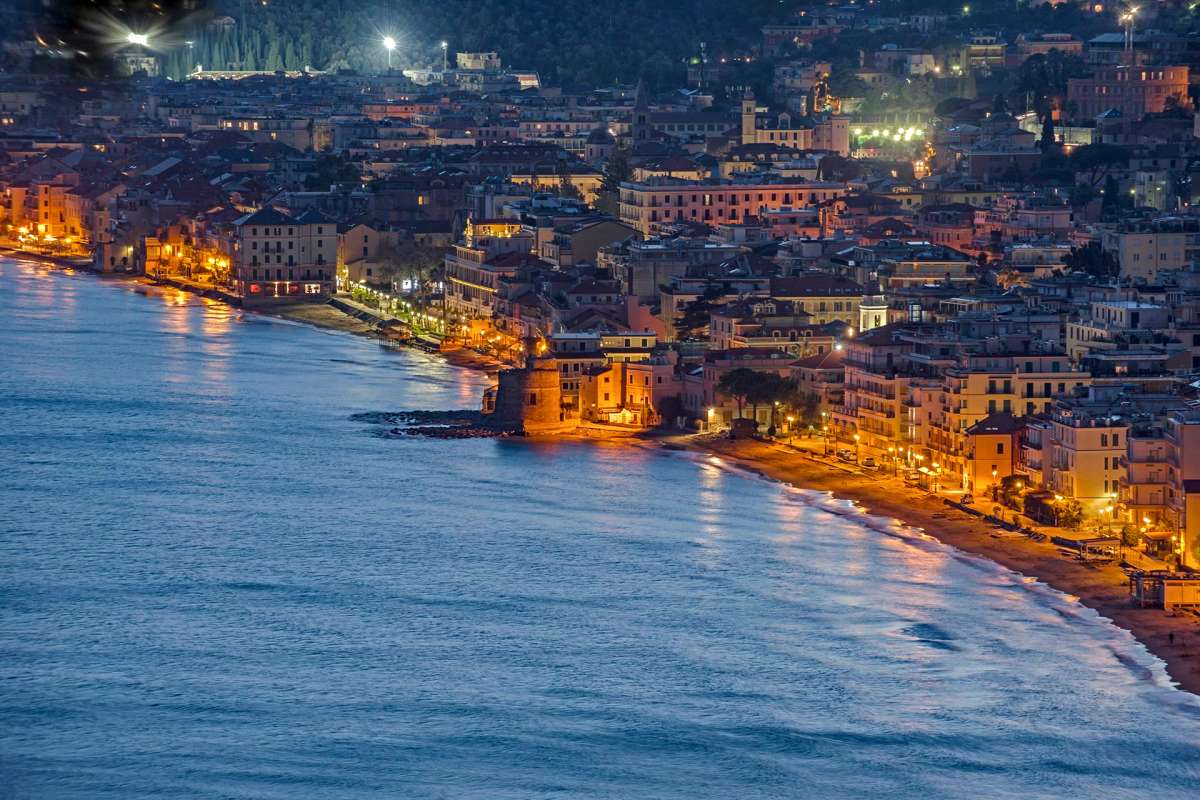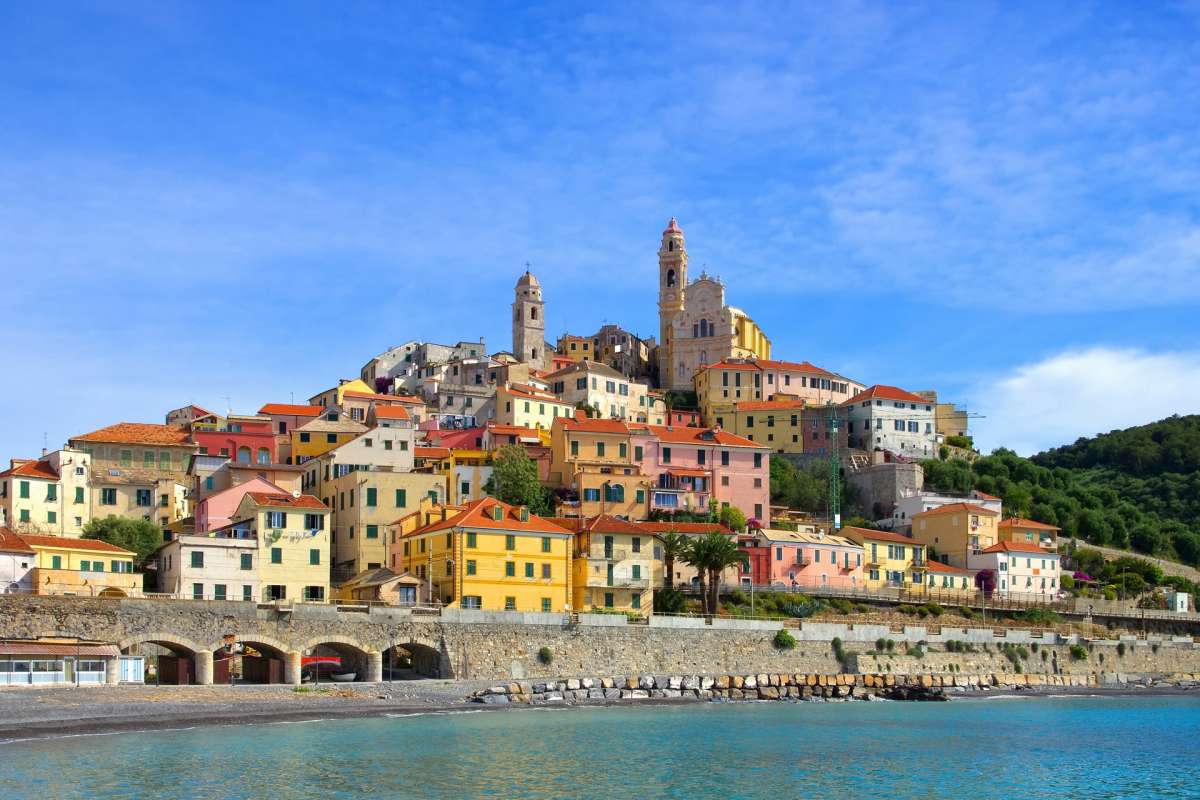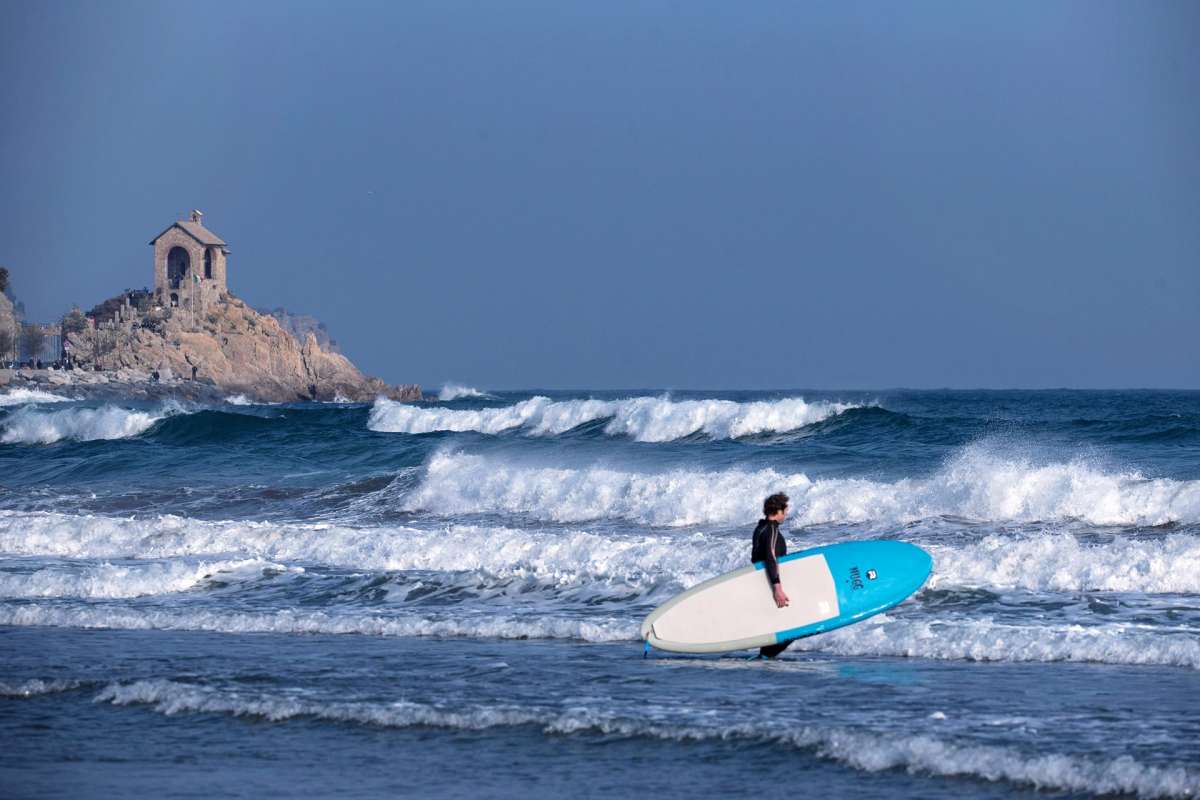The city in Roman times, Albingaunum, was on the sea with an important port. It is now 1 km from the coast due to the great floods of the 13th century which changed the course of the main river the Centa.
It retains a large part of its medieval walls (on foundations of the eighth century BC) and three seventeenth-century doors, as well as a dozen masonry tower-houses from the twelfth-fourteenth century.
At the center of the city stands the elegant bell tower (1391) of the Cathedral which together with the two towers forms an evocative architectural ensemble. During the excavations, traces of an early Christian church (dated late 4th century) of the same size were discovered, with evidence of other later buildings.
Palazzo Vecchio del Comune (1387 - 1421) houses the Civic Museum (open 9-12, 15-18 except Mondays), with Roman and medieval remains including a well-preserved Roman mosaic floor.
From here you go down to the level of the 5th century Baptistery with a decagonal shape externally, and octagonal internally, the only well-preserved example of Byzantine art in northern Italy after Ravenna. Inside, in the main apse, there is a precious Byzantine mosaic. Next to it is the suggestive Piazzetta dei Leoni where you can admire the sculptures of three Renaissance lions brought from Rome in 1608 by the Costa family. On the side the external fifteenth-century frescoes of the Bishop's Palace. The Diocesan Museum exhibits a collection of ceramics and various Renaissance works of art. (Open 10-12, 15-18 except Mondays). On the side of the Cathedral, in Piazza San Michele, stands the thirteenth-century tower of Palazzo Peloso-Cepolla, whose rooms house the Roman Naval Museum (open 9-12, 15-18 except Mondays), which contains over 1,000 amphorae and finds recovered in 1950 from a Roman ship sunk off the coast of Albenga in 100-90 BC. (The largest Roman transport ship ever found in the Mediterranean). The ship was carrying more than 10,000 wine amphorae from Campania to southern France and Spain.
At "Il Monte", in the southwest of the town, there are the remains of one of the most important monuments of the ancient Albenga, a Roman theater overlooking the city. Nearby is a stretch of the original Roman road, the Iulia Augusta, built at the time of the expansion of the Roman Empire towards northern Europe.
It takes its name from the emperor Augustus who inaugurated the road. Along the Iulia Augusta there are numerous funerary monuments. It is possible to follow the road up to the aforementioned chapel of Santa Croce, which dominates Alassio and its bay.






